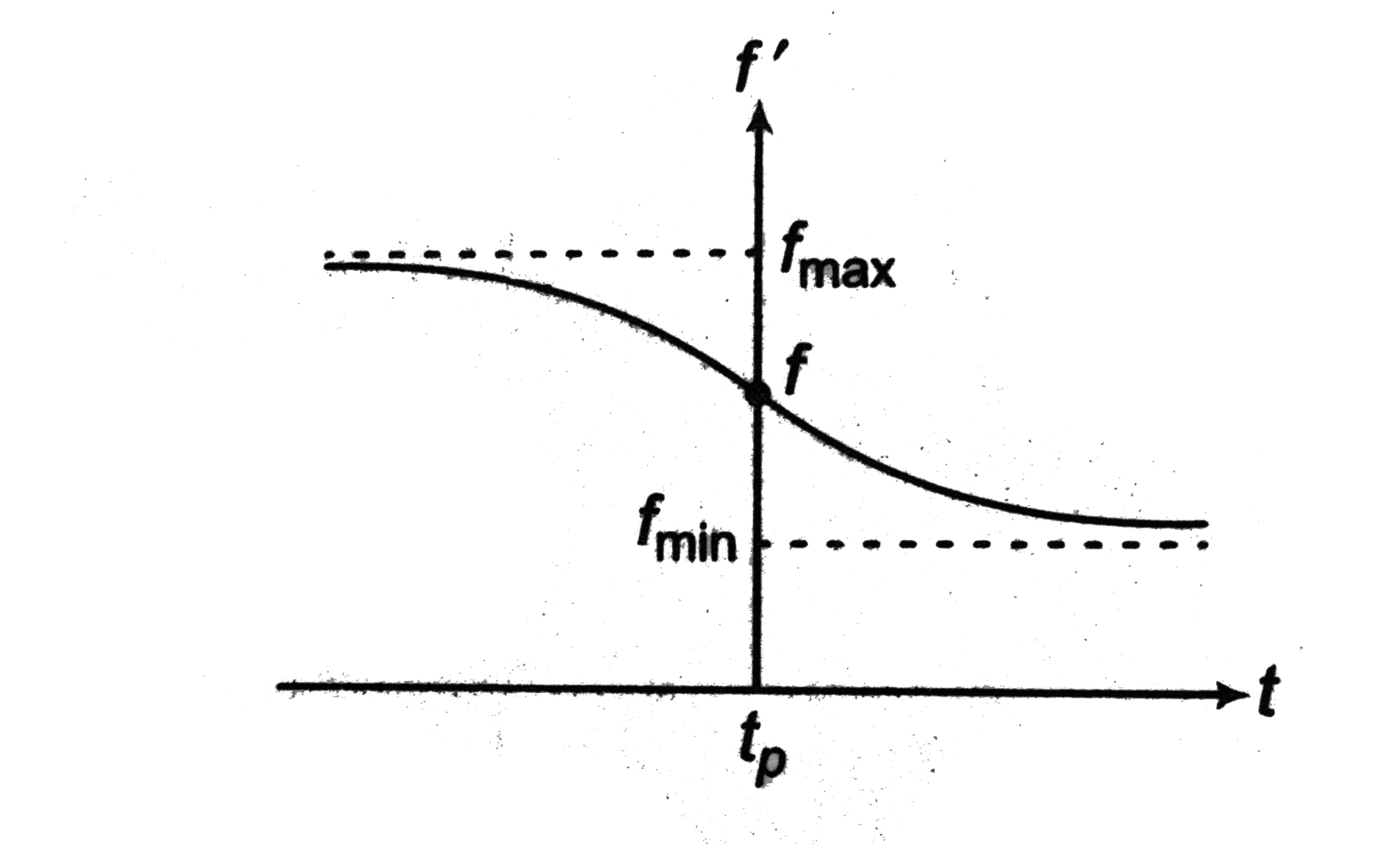Repeat example −11 if source does not move along the line SO.

The changed frequency f' is now,
f'=f(υυ−υscosθ)
This time f' is not constant but it is a function of θ , which is variable. But , at a far distance,
θ→0∘ or cosθ→1 or
∴f'=f(υυ−υs)
and this is the maximum value of f' (say fmax)
At point P,θ=90∘
∴f'=f
During receding (to the right of p)
f'=f(υυ−υscosθ)
again, at large distance from P,
θ→∘ or cosθ→1
f'=f(υυ+υs)
This time, this is the minimum value of f' (say fmin).
Hence, f' varies from fmax to fmin' with f'=f at the time of crossing p .
The correct f' versus t graph is as shows below.

Topper's Solved these Questions
- SOUND WAVESBOOK - DC PANDEYCHAPTER - SOUND WAVESEXERCISE - Miscellaneous Examples
8 Videos
- SOUND WAVESBOOK - DC PANDEYCHAPTER - SOUND WAVESEXERCISE - Level 1 Assertion And Reason
10 Videos
- SOUND WAVESBOOK - DC PANDEYCHAPTER - SOUND WAVESEXERCISE - Example Type 4
2 Videos
- SOLVD PAPERS 2017 NEET, AIIMS & JIPMERBOOK - DC PANDEYCHAPTER - SOLVD PAPERS 2017 NEET, AIIMS & JIPMEREXERCISE - Solved paper 2018(JIPMER)
38 Videos
- SUPERPOSITION OF WAVESBOOK - DC PANDEYCHAPTER - SUPERPOSITION OF WAVESEXERCISE - Level 2 Subjective
8 Videos
Similar Questions
If source does not move along the line SO. what will be the apperent frequency at O

View SolutionAssertion: A charge particle is free to move along electric field. It does not move along an electric line of force?
Reason: Its initial position decides that it will move along the line of force or nor.
View Solution
Knowledge Check
A particle is moving along a straight line.
AIf the acceleration of the particle is more than that of another object, the particle is moving faster.BIf the acceleration is positive, the speed must be increasing.CIf the acceleration and the velocity have the same sign, the speed must be increasing.DIf the acceleration is zero, the velocity is constant but the speed may be changing.A listener is at rest with respect to the source of sound. A wind starts blowing along the line joining the source and the observer which of the following quantities don't change ?
ATime periodBVelocity of soundCFrequencyDWavelength
A source of frequency f is moving towards the observer along the line SO with a constant velocity υs as shown in figure. Plot f' versus t graph . Where f' is the changed frequency observed by the observer.

View SolutionA source of frequency f is moving towards the observer along the line SO with a constant velocity υs as shown in figure. Plot f' versus t graph . Where f' is the changed frequency observed by the observer.

View SolutionA listener is at rest with respect to the source of sound. A wind starts blowing along the line joining the source and the observer. Which of the following quantities do not change?
View SolutionRepeat the previous problem if the particle C s displaced through a distance x along the line AB.
View SolutionA motor cyclist is moving along the line x–y=2 and another motor cyclist is moving along the line x–y=4 find out their moving direction.
View SolutionThree particles start from the origin at the same time, one with a velocity v1 along the x-axis, second along the y-axis with a velocity v2 and third particle moves along the line x = y. The velocity of third particle, so that three may always lie on the same line is:
View Solution
